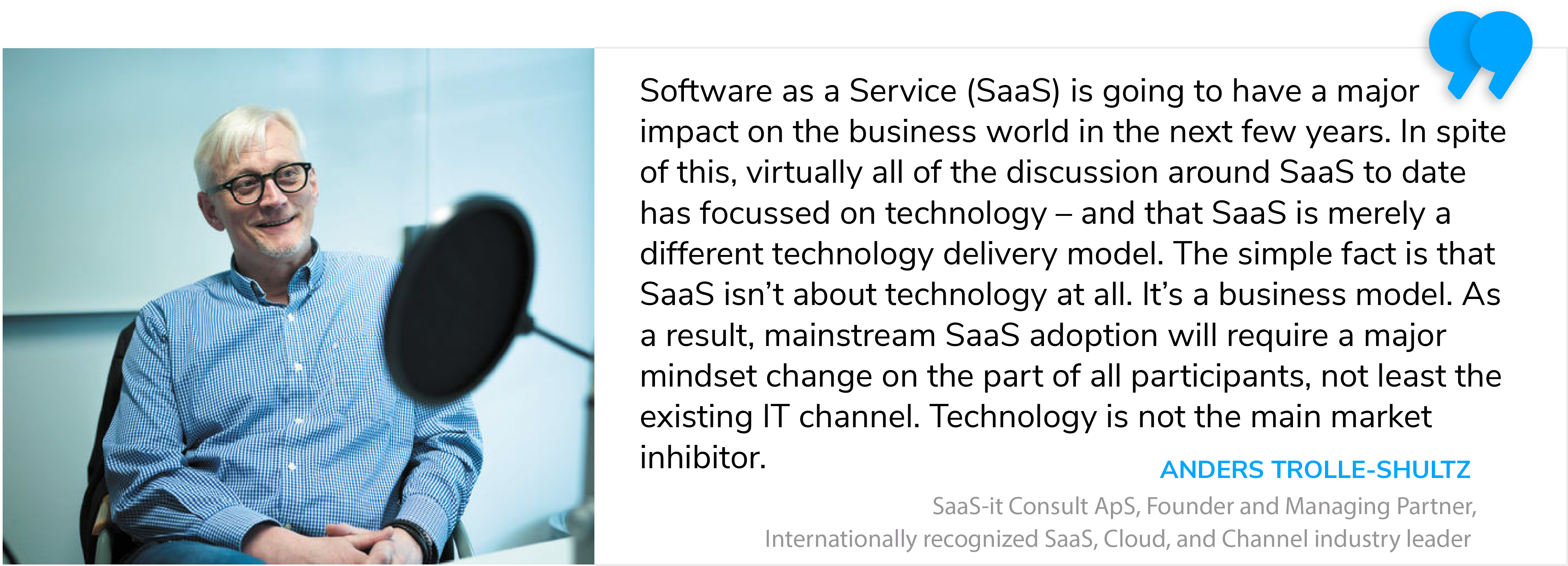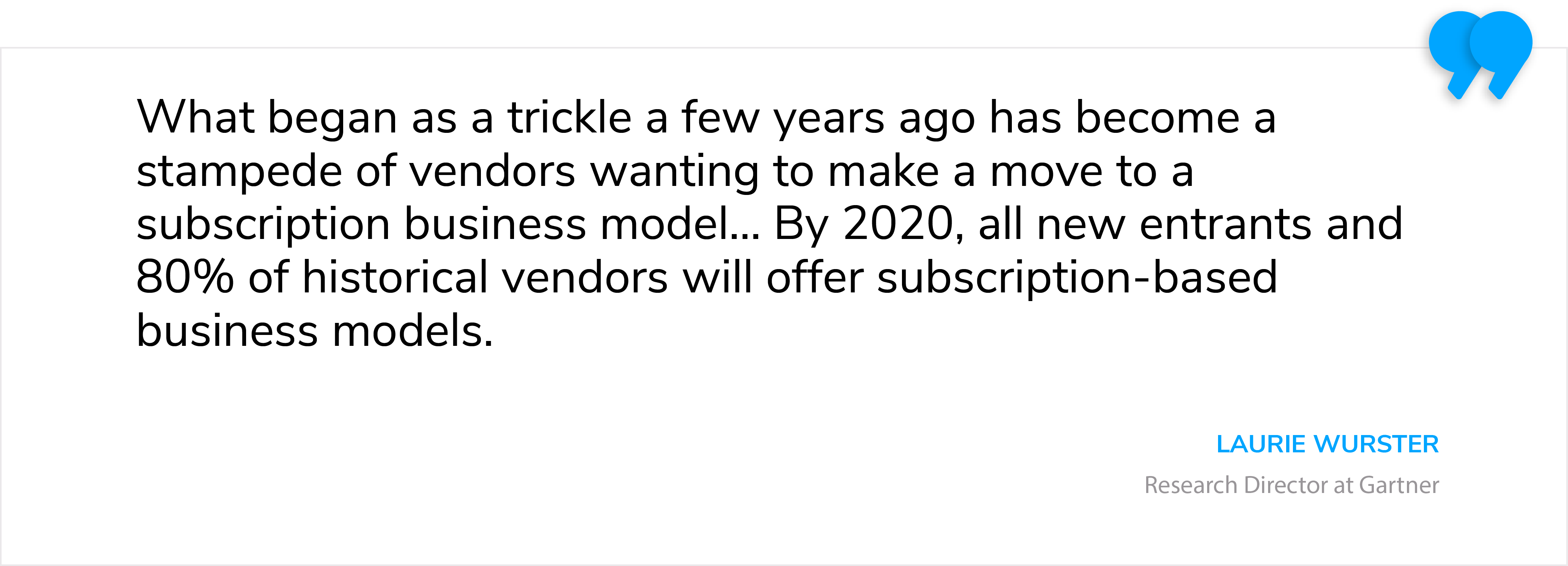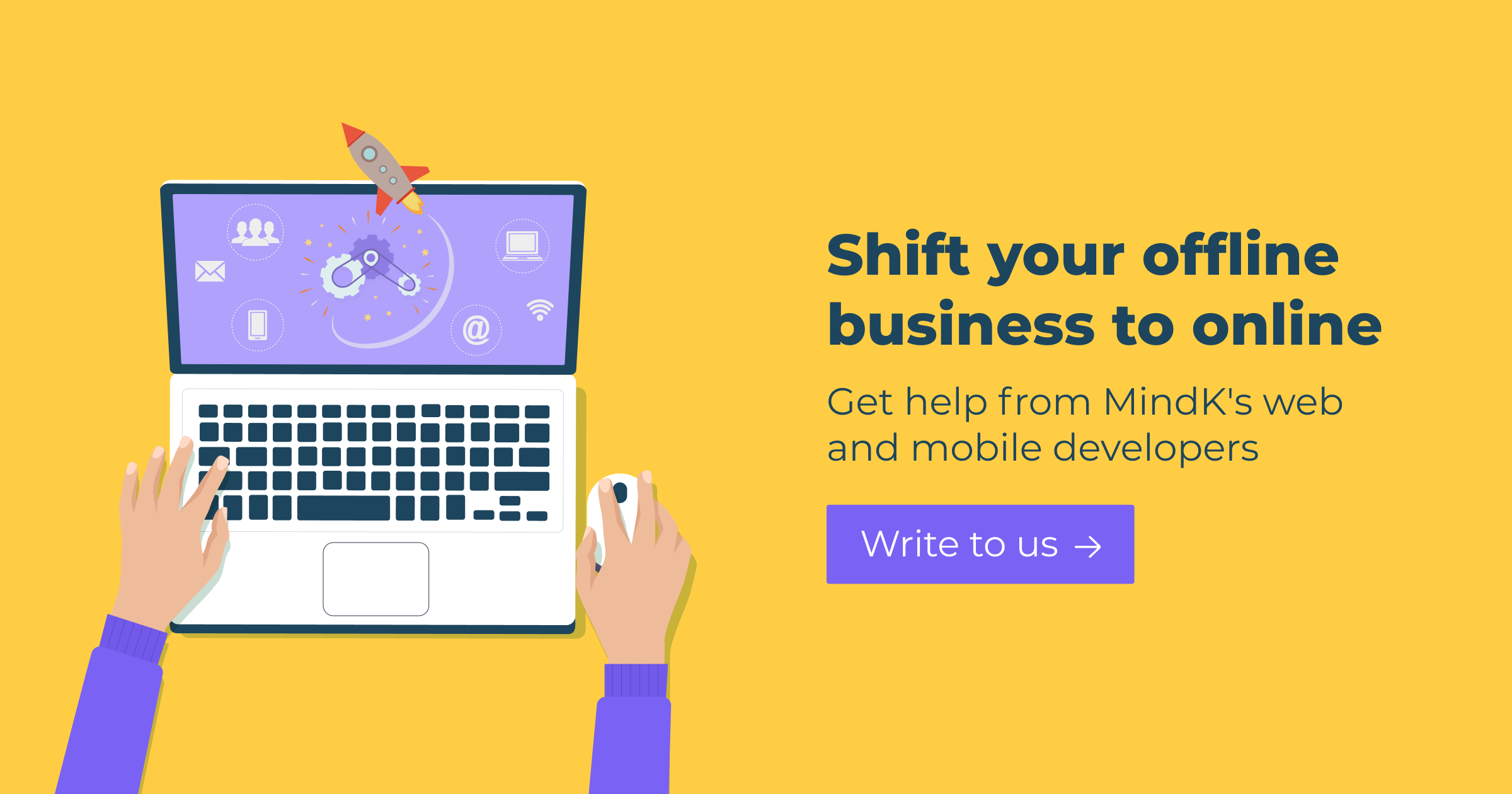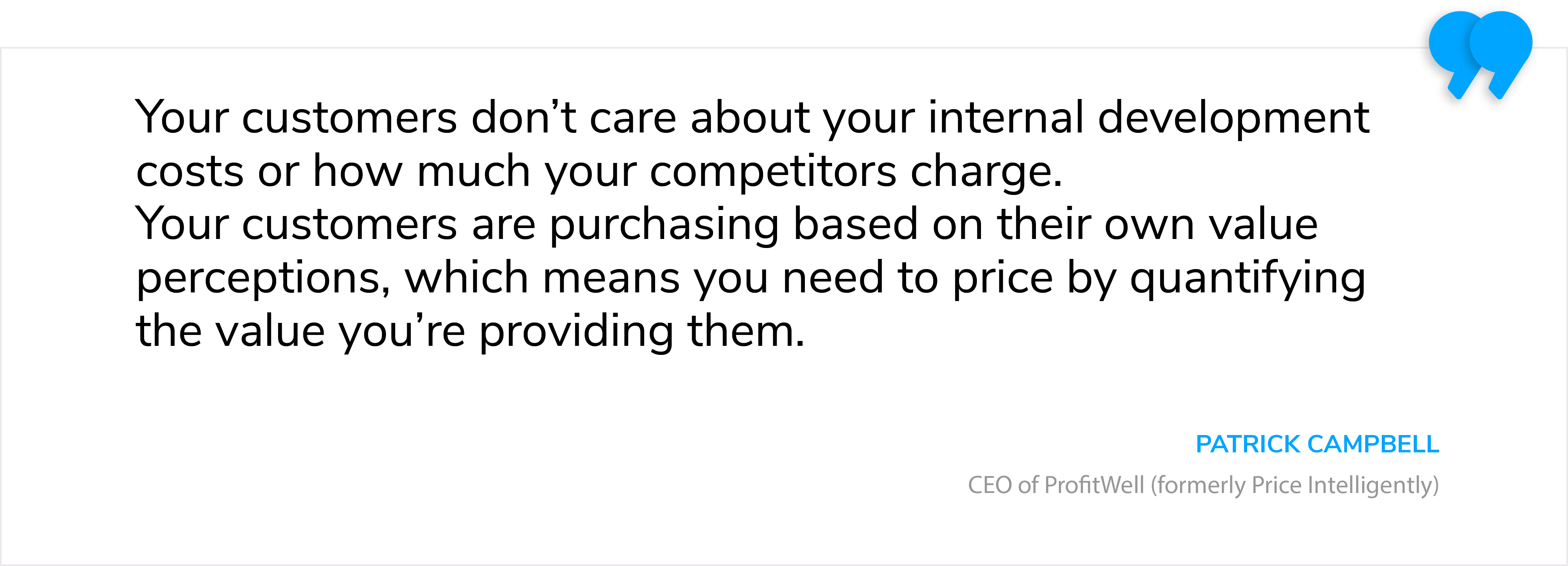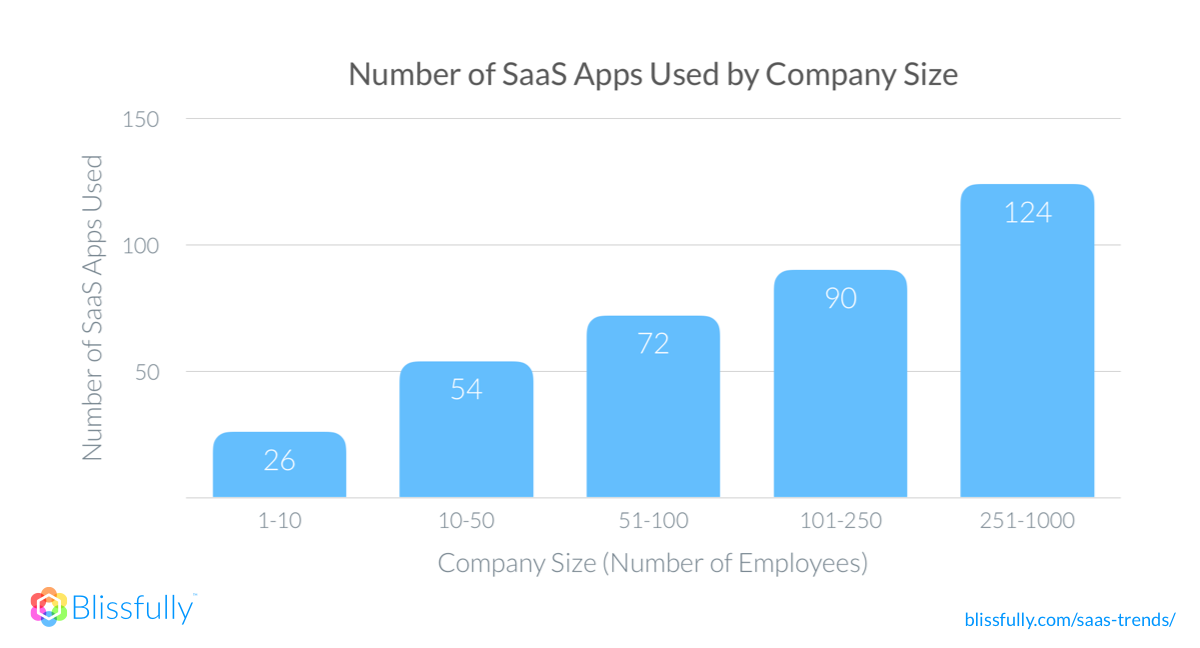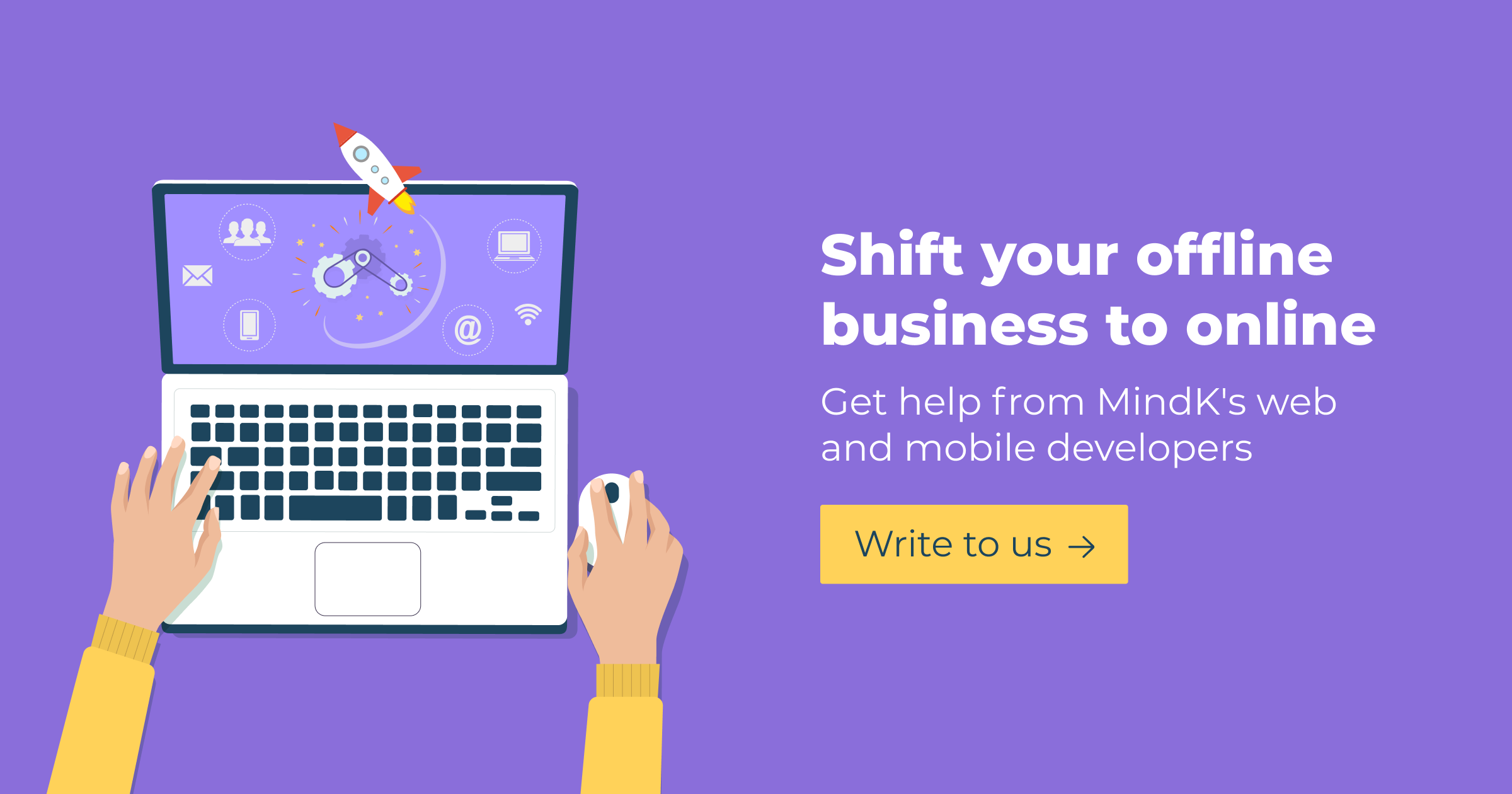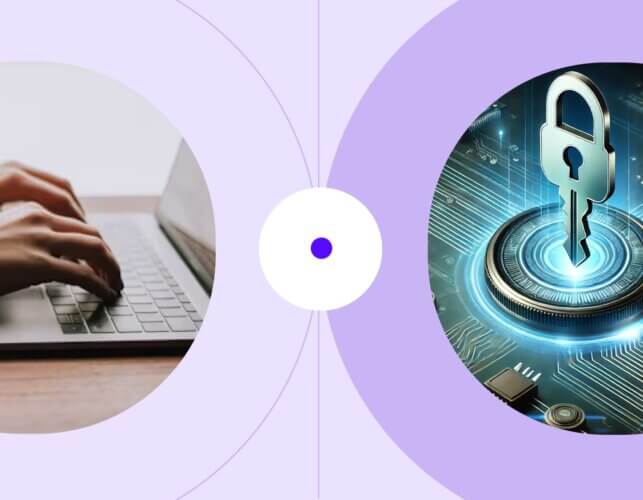World-renowned companies offering SaaS services like Salesforce, Dropbox, and Slack, are just the tip of the iceberg. Each year more companies around the globe take a chance on moving to a SaaS business model. And for good reason.
Software as a Service (SaaS) industry is a subset of the overall market of cloud-based services that generates $46 billion a year.
Additionally, BetterCloud states that 73% of companies plan to run purely on SaaS apps by next year.
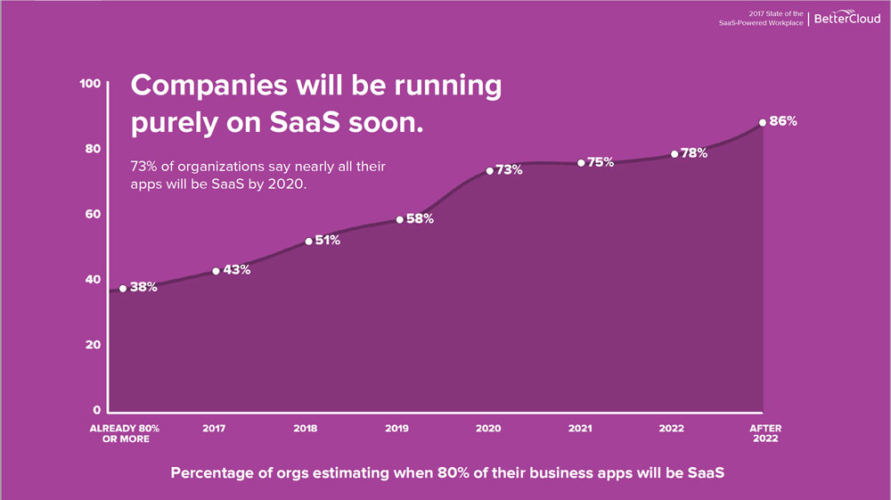
So, if you still hesitate on whether to move to a SaaS business, it is high time to get off the fence.
We are going to talk about:
- what is a SaaS business model and how it works,
- why SaaS is more than a subscription model,
- why the shift is a good idea for your business, and
- how to do it right.
Before we dive deep into the SaaS universe with all its peculiarities, let’s start small and sort through what is actually meant by the SaaS business model.
What SaaS business model is all about
The Internet teems with SaaS definitions and finding the full picture of the concept is like carrying water in a sieve.
Thus, to build up a comprehensive portrait of SaaS, we have analyzed a number of definitions and defined what they have in common.
First of all, SaaS is not only about technology – it is more a business model.
Then SaaS is a ready-made app that mostly feeds on subscription. Customers have no need to maintain it on their own. The vendor is the one responsible for maintaining and hosting both servers, databases, and code composing the solution.
SaaS rests upon infrastructure as a service (IaaS) and platform as a service (PaaS) to provide an application which can be accessed from any device having an Internet and browser. We have already reviewed what is Cloud, IaaS, PaaS and how they differ here, so you may check this out before you proceed.
As a result of the combined characteristics stated above, we fleshed out the following definition:
Software as a Service is a business model powered by IaaS and PaaS, that allows delivering an application through the Internet to a large number of customers in return for a subscription fee.
From this perspective, you might conclude that every software that has a subscription plan is a SaaS product and the other way round. But that’s wrong, however, the two models may look very similar on the surface.
SaaS is much more than subscription model
Don’t get me wrong, the subscription model is a great opportunity for a business able to bring a number of benefits.
Subscription companies have grown more than 300% in the past 7 years, states the Subscription Economy Index report.
The reason why we double down on the difference between SaaS and subscription concepts is that such misconceptions may turn out harmful, both for businesses who consider moving to SaaS technology and customers who expect to get the best out of SaaS offering.
The thing is that the subscription model is used for selling both cloud-based and on-premises products, so it cannot be considered as a main hallmark of Software as a Service model.
When the vendors sell traditional on-premises software under subscription (it will be more accurate to say a license), the software is not a web-based and still requires installation directly onto client machines. Additionally, as explored in the Younium subscription billing guide, the client often pays a maintenance fee, which ranges from 15 to 20% of the license cost, to get updates or access service assistance from the vendor.
And the cherry on the top – the customer carries the responsibility for his own hardware on which the software is running, and internal resources to ensure it works properly.
For such a reason, for example, MS Office 365 and Adobe Creative Cloud cannot be considered pure SaaS services. They are set midway between the traditional on-premise and SaaS models.
In addition to “buying” and using the application, SaaS users also get the required infrastructure, new versions, support and so on.
In such a manner, when opting for SaaS the customer obtains a full range of services, not just software.
“Customers have moved from buying or leasing technology to buying IT services, to ‘buying’ long-term relationships with providers.” – Laurie Wurster, Gartner Research Director
Now, when you arm yourself with a precise understanding of a SaaS architecture, we are ready to proceed to why companies try to shift to SaaS.
3 reasons why SaaS transition pays its way
The shift in software distribution has completely changed the way both consumers and businesses view software. They look for more agility in every aspect of their lives and operations, including software.
Most companies that switch to a SaaS model have their own objectives, while others follow “Yep, I’m in too” approach when all or main competitors in the market decide to make SaaS implementation.
Moreover, it is hard not to notice the advantages of SaaS. Here are the most common reasons businesses decide to build SaaS products, no matter if they are a software company, a consultative organization or a startup.
Reason 1. Anticipated revenue
The idea of predictable profits in an unstable business environment looks like an oasis in the middle of the desert, doesn’t it?
In general, the revenue can be simply represented by the following equation: Number of SaaS customers * Revenue/Customer= Revenue
In such a way, the SaaS model helps you plan your income, allocate your resources better and make your business easily scalable.
Anticipated revenue and scalability create a predictable ecosystem for the growth of your company.
Reason 2. Short sales lifecycle
The process of setting up client relationships in a traditional software development company or consultancy agency may take weeks or even months.
You need to negotiate the terms of the contract and the price, define the scope, timeframes and a lot of other work until you can proceed with delivering services.
If you offer SaaS services, the process is much faster as the set of services is clear and explicit from the start. The user chooses the offering, decides among the SaaS pricing models that are available and meet its corporate needs. That is the whole story.
Reason 3. No need to customize your solution for each client
Most SaaS products available on the market allow no customization when others try to bring it down to a minimum. It is fair enough from the side of the software vendor and frees them from wide-scale negotiations with clients.
They can work on bettering the overall services instead of wasting time on adjusting the product for each client individually. Thus every improvement of the service benefits every client who is engaged.
How to make the transition a success story
The move to the SaaS business model is a transformational change which definitely will influence the DNA of your business.
We have prepared a list of things you need to pay attention to when shifting to SaaS. The tips are not a magic bullet but believe they might play a crucial role in your business growth.
#1 Make your pricing clear and explicit
But how to know if you aim too high or too low when developing SaaS pricing model. There is no right answer.
Building the price right is more art than science.
Each product and each business has its own pricing strategy. It might involve a number of factors such as product value to customers, competitor offers, peculiarities of the target segment, billing cycles, sales process, type of pricing model you have chosen and so forth.
The good news is that you are free to choose among a large number of pricing models, such as pricing per user, pricing based on a feature, build up various pricing packages for sets of features, propose a free base service with paid subscription for an extended set of features and so on.
Keep in mind that your pricing should be based on customer value. You need to know the value your product provides for users. Moreover, pricing packages can help you attract customers from different groups.
Test your pricing model, it should not be a “once designed never changed thing”, as pricing is an ongoing process.
#2 Focus on customer retention
Harvard Business Review says that typical American business lose 50% of clients every 5 years. Most of clients leave because of bad customer care. On top of that 91% of small companies do nothing to retain their existing customers. Nothing!
In reality, SaaS business in a greater degree presupposes the high level of retention.
The reason for that is simple.
A good retention rate allows business to generate revenues from users and subscribers each billing period and along with that, acquire new clients organically.
Here is the statistic that speaks for itself.
Companies are reported to improve profits from 5% to 125% (depending on the industry) after increasing customer retention rate by 5%.
In case you make the move to SaaS revenue model and already have a base of loyal clients, focus on retaining them and help them “make friends” with your SaaS product. And it is just a first step in the retaining strategy.
Sure, acquiring new customers plays its role in company growth but retention is much cheaper than acquisition. That is why, if you’re focused on the long-term SaaS benefits it is reasonable to sweat away to retain your clients as long as you possibly can.
#3 SaaS model is all about metrics and analytics – use them
There is a great number of metrics to measure the performance of your SaaS business. You can track most of them or focus on the critical ones. Whatever you choose, it will help you:
- see how your business is developing and how to improve its performance;
- discuss the characteristics of growing your business with your team or/and investors;
- analyze the metrics in order to keep track of the company’s health.
Keep in mind that metrics have no power to fix anything but they are a great tool to assist you in making informed decisions.
We will not list off all the possible metrics, just essentials:
Monthly recurring revenue (MRR). The recurring nature of the SaaS payment model makes it easier to outwatch and predict revenue, which may cause certain difficulties for other business models. To find out the MRR, sum up the recurring revenue generated by that month’s customers for any given month (period t). The formula for MRR looks like the following: MRRt = Σ Recurring Revenuet
“The one metric that I look for is the basic MRR… Every SaaS company should live and die by MRR, because that’s something that you can’t go without.” – Mamoon Hamid, Social Capital
Customer churn. A business should focus on minimizing the loss of existing customers and attracting new ones. The customer churn measures the rate of subscribers who cancel or don’t renew their subscription. It is better to track both monthly and annual rates, because normal monthly customer churn may turn into a hair-raising annual rate.
To find out the rate you need to divide the number of clients you lost in a certain period by the number of clients at the beginning of that period.
Annual Recurring Revenue (ARR). The recurring revenue generated by your SaaS company during the year looks like the following: ARR = MRR * 12
“… most enterprise SaaS companies should use annual recurring revenue (ARR), not monthly recurring revenue (MRR), because most enterprise companies are doing annual, not monthly, contracts… “ – Dave Kellogg, Host Analytics
#4 Use the upselling potential
When used right, the upselling technique, namely selling more expensive services or additional features to existing clients, is a great scenario for company growth and customer satisfaction.
The probability to sell to a new client is 5–20%, when the probability to sell to an existing customer is about 60–70%.
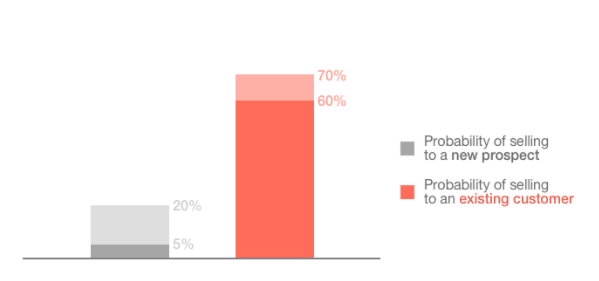
Keep in mind that any upsell must be related to the needs of the users, and it should advance or improve their business and their relationship with yours.
#5 Offer easy integrations
Today, customers are demanding integration into multiple, hybrid application systems that they typically use. To truly deliver on business value you must provide integration.
This typically means building your own API that will allow you to exchange data with other applications. By allowing other companies to build integrations on top of your SaaS product, you can enter a fast-growing Integration Platform as a Service (IPaaS) market that’s expected to reach $8.6 billion by 2023 (42.1% CAGR).
Despite the growth of SaaS apps, the bulk of enterprise systems remains on-premise. Getting access to legacy data is one of the top concerns for business owners who consider moving to the cloud. That’s why offering easy and fast integrations can become a great differentiator in a highly competitive SaaS market.
What’s more, a typical company now uses dozens of highly-specialized SaaS apps. Integrating them into a single system is a huge benefit for any businesses.
That’s why API development is critical to succeed with the SaaS model.
Successful integrations can optimize operational efficiency of the business, automate workflows and fuel digital transformation for the modern times.
For example, a CRM powerhouse Salesforce generates more than 50% of revenue via a public API. Its marketplace now has more than 3,6k third-party apps. This focus on integration is one of the top reasons for Salesforce’s rapid expansion (23.2% growth in 2018).
What are you waiting for?
As you can see, the world of business is expected to embrace SaaS business model, as it offers game changing opportunities and even foretell the new epoch of cloud computing.
When shifting to SaaS perceive it not just as a new product, but as an entirely new channel that opens up new market opportunities for your business.
MindK has already helped our client CEMAsys to shift from an offline consulting organization into a successful SaaS company. The product is now used by more than 250 Norwegian and global companies to manage and report all the important sustainability and environmental information.
If you think that shifting to SaaS is a tough case, we can dispel this illusion, just drop us a line and we will help you with this.

